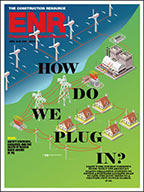Biden and Infrastructure
Experts Expect Urbanist Approach From U.S. DOT
High-speed rail and electric vehicles likely to be emphasized

High-speed rail, such as in California, is expected to receive support from new Administration. Photo courtesy of California HSR Authority
With a number of prominent New Yorkers joining the U.S. Dept. of Transportation and President Joe Biden’s longstanding support for commuter rail, transportation experts are optimistic for a renewed emphasis on high-speed rail, electric vehicles and tolling technology.
“There is a new urbanist perspective,” said Sarah Kaufman, associate director at the New York University Rudin Center for Transportation, adding that the traditional focus on car transportation for commuting to and from work “is not the reality for many Americans right now.”
Kaufman spoke at a virtual panel Feb. 10 as part of the CoMotion mobility conference focused on transportation under the Biden Administration, noting that Trasnsportation Secretary Pete Buttigieg has selected as his deputy , former NYC DOT commissioner Polly Trottenberg, who advocated for bus and bike lanes. “She helped people reconsider how they approach their streets, customers and business practices in a creative and thoughtful way,” said Kaufman.
Other city transportation veterans on the federal agency's staff include Nuria Fernandez, deputy administrator for the Federal Transit Administration and Meera Joshi, deputy administrator for the Federal Motor Carrier Safety Administration. Kaufman stated the hope that DOT will support the New York Metropolitan Transportation Authority in upgrading subway service.
David Cameron, assistant to the director for the Teamsters Rail Conference, said he was hopeful that under the Biden administration there could be a “second great rail revolution.” He suggested that, like highways and aviation, there should be a dedicated trust fund for passenger rail. He also suggested a “strike force” to focus on high-speed rail be established.
Cameron said he sees promise for high-speed rail in the U.S., with ongoing efforts in Texas and California. Although the California project has been buffeted with budget, schedule and legal woes, Cameron noted other nations' high-speed rail projects—such as those in Japan and France—faced similar opposition, but once a route was up and running, other communities wanted high-speed rail.
Paul Salama, CEO of the startup ClearRoad, which offers cloud-based applications for road charging, congestion pricing and tolling, noted that Buttigieg has mentioned the possibility of moving to a vehicle-miles-traveled formula for federal transportation funding and suggested a national rollout of road usage charging.
In noting Biden’s pledge to roll out electric vehicle infrastructure and clean energy, Andrew Liu, senior vice president at AECOM, said “this is a very complicated landscape," suggesting DOT could work with the US Dept. of Energy and other agencies.
He also noted future challenges in how high-speed rail, road usage apps and other emerging technologies such as autonomous vehicles and Hyperloop would be integrated into the transportation marketplace.



